Top Photo: Ján Golian, one of the leaders of the Slovak National Uprising. Date and author unknown. Courtesy of Wikimedia Commons.
On August 29, 1944, at 20:00, Slovak Lieutenant Colonel Ján Golian gave the order to “start the evacuation” (začnite s vysťahovaním), officially beginning the Slovak National Uprising. The two-month uprising against the German military occupation and the Nazi-aligned Slovak state ended in failure on October 27, 1944; however, it ultimately placed Slovakia on the side of victors. The Slovak state was an ally of the Third Reich, headed by Catholic priest and President Jozef Tiso. Against Tiso and the Nazis, more than 80,000 soldiers and roughly 18,000 partisans, as well as fighters from 30 other nations, joined the Slovak National Uprising. Its strength, depth, and impact made it one of the largest and most important anti-fascist campaigns in Europe during World War II, even though it remains relatively unknown outside of Slovakia.
The Slovak State (1939-1945)
After the annexation of Austria, Adolf Hitler set his eyes on another territorial expansion—this time in Czechoslovakia. Hitler did so with the help of domestic right-wing radicals, represented by the Hlinka Slovak People’s Party (HSĽS), who openly advocated for a Slovakia fully independent from the Czech lands. Located in the heart of Europe, Slovakia became an independent state on March 14, 1939, for the first time in its history; but its independence was contingent on its relationship with Nazi Germany. Slovak officials signed a friendship agreement with Nazi Germany, aligning the two countries politically, ideologically, economically, and militarily. In other words, when Nazi Germany invaded Poland in September 1939 and the Soviet Union in 1941, the Slovak army provided support. In the case of Operation Barbarossa, Tiso sent two divisions to fight on the side of the Axis powers. In fact, one of the divisions made it all the way to the Caucasus Mountains in 1942. The Slovak government tried to glorify the soldiers’ participation in the war who were fighting on the winning German side. The morale of the soldiers on the Eastern Front remained low, however, and many deserted to the Red Army.
Though Slovakia was a nominally independent state—not militarily occupied like the Czech lands—Germany also sent advisers to ministries, central offices, and the police. These advisers oversaw all operations in addition to the activities of domestic politicians.
Domestically, Slovakia’s policies resembled many of the anti-Jewish directives and restrictions that Jews faced in Germany. Slovak politicians were responsible for creating and implementing antisemitic measures that resulted in deportations. The Hlinka Slovak People’s Party became the dominant party, banned all opposition parties, and accommodated itself, ideologically, to Nazi Germany. Tiso, the head of the HSĽS, was a relative centrist within the party and a Catholic priest (after the war he was executed for treason and collaboration). Many high-ranking party officials were Catholic clergy; the party was founded by a Catholic priest, Andrej Hlinka, who advocated the mixture of religion and politics. Therefore, Tiso drew his legitimacy not only as a high-ranking politician but as an active priest who continued to hold Mass throughout the country during the war. HSĽS created a totalitarian state utilizing the Hlinka Guard, a paramilitary organization, and the Hlinka Youth, which prepared children for military service. After the war, Slovak politicians maintained that they chose “the lesser evil” when they collaborated with Nazi Germany, as “other choices,” including annexation by Hungary or German military occupation, would have been “far worse.”
Economically, Germany heavily relied on the Slovak economy in the war effort. Armories, particularly in Dubnica nad Váhom and Považská Bystrica, produced weapons and ammunition, parts for naval torpedoes, aircraft engines, and V2 rockets for the German army. In addition, Germany, as the main buyer of Slovak products, determined what would be produced as a priority. On the other hand, as the Third Reich suffered military losses and, because of the war, also lost the ability and the willingness to pay for the goods, it accumulated larger and larger debts. German losses mounted after the Battle of Stalingrad, and internal disunity and resistance to the Slovak regime increased.
The Resistance Grows
Two blocs formed the illegal resistance: the Civic Bloc and the Communist Bloc. The Civic Bloc was composed of supporters of banned parties and associations, including Jozef Lettrich, Ján Ursíni, and Matej Joško, who tended to favor the restoration of a democratic Czechoslovakia. They had some connections with former Czechoslovak government officials, who were in exile in London, and cooperated with some illegal groups in the Protectorate. The Communist Bloc, represented by Gustáv Husák, Ladislav Novomeský, and Karol Šmidke, on the other hand, advocated for a pan-Slovak organization and a very strong connection with Moscow after the war. They did not recognize prewar Czechoslovakia and had no intention of reunification. Though both blocs held strong beliefs and different versions of the future, they did not have bloody clashes, like in other cases of anti-Nazi resistance. In addition, religious minorities, including Slovak evangelicals, joined the resistance because they were dissatisfied with the privileged position of the Catholic Church, particularly in the highest governmental positions.
These groups joined forces in late 1943 under what became known as the Christmas Agreement, from which they created the Slovak National Council (Slovenská národná rada, SNR). The Council’s goal was to prepare a nationwide uprising against the ruling HSĽS and Nazi Germany and to restore a democratic Czechoslovakia that would guarantee equality to Czechs and Slovaks. With the help of the Slovak military, SNR was responsible for the military training and command. The already growing discontent and low morale in the Slovak military made the goal a little easier. The Council tasked Chief of Staff of the Ground Forces Lieutenant Colonel Ján Golian with the uprising’s preparation; he and his supporters, including Rudolf Viest, worked in Military Headquarters.
In addition to organized resistance, dozens of partisan groups also operated throughout Slovakia and represented between 12,000 and 18,000 fighters, primarily men. They were mostly lightly armed and trained only to conduct guerrilla warfare. Before the uprising, many destroyed communications, raided German transports, and attempted to sabotage the war effort. During the uprising, they were not subordinated to the headquarters of the 1st Czechoslovak Division. Therefore, when army commanders asked partisan commanders for cooperation, in some cases they declined. For the most part, partisans did strongly support the army units during the uprising and suffered considerable losses, particularly in Strečno, Ružomberok, Telgárt, and Hronská Dúbrava.
Preparations
The material preparation for the uprising began as early as May 1944 but faced several obstacles from the beginning. Nazi secret services and HSĽS security forces were aware of the increasing illegal resistance activity and did everything in their power to break it up. While they were successful in some respects, they were unable to completely get rid of resistance groups who threatened HSĽS’s power and existence.
The Slovak National Uprising was also helped by the changing international context, particularly the Allies’ military strategy. When the Allies landed in Normandy in June 1944, few doubted the defeat of Germany. In addition, the US Army Air Forces bombed Slovakia on June 16, 1944, damaging the strategically important Apollo oil refinery in Bratislava. A few weeks later, the Red Army arrived in eastern Slovakia, which was considered enemy territory. The Soviets’ task, among others, was to organize partisan and resistance groups. Many so-called ordinary Slovaks joined the partisan units, and their numbers grew quickly; the partisan units took advantage of Slovakia’s mountainous terrain, especially in central and eastern Slovakia, where they could train and hide very effectively. The Slovak political leadership became increasingly concerned about the illegal activities and declared martial law on August 11, 1944.
The Military Headquarters created two strategic plans, one offensive and one defensive. The offensive plan included two army divisions opening territories near Dukla, a town near the Polish, Slovak, and Ukrainian borders near the Carpathian Mountains, and trapping German units there. In other words, the two best armed Slovak divisions would seize the Carpathian crossings while the army, partisans, and national committees would take over the government. The partisan units would be responsible for defending rebel-controlled central Slovakia as they awaited the arrival of the Soviet Red Army, expected to make rapid passage into the Danube region.
The second option, the defensive plan, also known as the “crisis plan,” counted on the fact that the German military would occupy Slovakia. This plan not only counted on the defense of northern and western Slovakia from the German army but also the partisan controlled territory in central Slovakia. The Slovak National Council, weapons, and supplies were concentrated in central Slovakia, which meant it was imperative to defend Banská Bystrica, Brezno, and Zvolen.
The two divisions of the Czechoslovak army played vital roles in both plans. Six tactical groups existed during the Slovak National Uprising: Kriváñ, Fatra, Gerlach, Muráñ, Ďumbier, and Zobor. The reorganization improved combat activity which changed rapidly as well as the country’s geographical features. The preparation time was significantly cut by the existence of partisan units and their activities in summer 1944. Two incidents escalated the situation. First, on August 27, 1944, partisans attacked the German military mission in Martin and executed some of its members in the courtyard. On the same day, German Ambassador Hanns E. Ludin visited President Tiso and informed him that German forces would be deployed and scattered across Slovakia. The forces, comprising roughly 15,000 men, arrived almost immediately on August 29, 1944.
The execution of at least 100 ethnic Germans in Sklabín by partisan groups, as well as the execution of members of the German military mission and the partisan presence in Ružomberok, alarmed Slovak and German officials. Two historical interpretations exist about the next steps. One interpretation suggests that Ambassador Ludin asked Berlin for military intervention against the partisans, a request that was granted. On the following day, the Slovak government officials agreed. The other interpretation suggests that the military invasion was planned, and Slovak officials were not consulted.
The military situation in Slovakia developed rapidly and unfavorably for the rebels, in part due to partisan activity. Many partisan groups wanted to mimic the successes of other partisan groups across Europe and allegedly employed violence against civilian populations. Most units operated individually and not in cooperation or communication with each other.
The Slovak National Uprising
The Slovak National Uprising, though still relatively unknown outside of Slovakia, was the second-largest anti-fascist uprising in Europe during the World War II, constituting more than 80,000 fighters from more than 30 countries, including Ukrainians, Czechs, Poles, Hungarians, Yugoslavs, and others. The uprising took place for six weeks from August 29 until October 27, 1944, though partisans continued to fight even after they retreated to the mountains.
The two-month offensive received help from the Allied powers, including the airlift of troops, supplies of weapons, material, as well as moral support. In addition, the fighting had something extraordinary in the limited use of air power on behalf of the insurgents. The uprising prompted a change in the operational-strategic plans of the Soviet army; it became, too, part of the liberation struggles in central Europe, and it affected the wartime and postwar situation of Czechoslovakia.
In the beginning, the uprising’s army consisted of 18,000 soldiers. That number quickly grew after the first mobilization on September 5 to 47,000, then to 60,000 by the end of the month. In addition, 12,000 to 18,000 partisans joined the army. The army only had weapons for roughly 75 percent of its fighters. At first, resources were estimated to last up to three months, which quickly proved to be wrong. The army lacked weapons, particularly machine guns, antitank weapons, and certain types of munitions. Sources cite that the 1st Czechoslovak Division had in its possession: 46,000 rifles, 1,500 light machine guns, 250 heavy machine guns, and 2,000 submachine guns.
It also had roughly 200 field and antiaircraft guns, 100 mortars, and 120 tanks—only 45 of them, however, were functional. The Allies supplied the fighters with munitions. The Soviets delivered submachine guns on October 15, while the Americans supplied the fighters with antitank rockets and machine guns. But it was clear that ammunition and weapons were in low supply; there was no backup.
The German military clearly possessed more technologically advanced weaponry, including 90 tanks, as well as a better-trained force of roughly 50,000 soldiers. Two motorized outfits crossed the Slovak border and headed to Žilina, a large town in central Slovakia. Unit Olen crossed through Púchov and Unit Jung through Čadca at roughly 15:00 on August 29, 1944.
Lieutenant Colonel Golian did not respond immediately to German troops as he waited for Slovak politicians to address the entrance of German troops onto Slovak territory. Minister of National Defense Ferdinand Čatloš delivered a speech a few hours later during which he called anyone who went against the German occupation a “traitor to their nation.” The remarks caused confusion and delayed the personnel, particularly in western Slovakia, from responding, allowing the German military to advance quickly.
Disadvantages
When the uprising broke out, historians estimate that military preparations were only 70 percent complete. The premature start of the uprising meant that the insurgents failed to fulfill their main objective of opening the Carpathian passes to the Soviet army. In addition, they also lost their best armed and trained units—the two divisions of the East Slovak army relatively quickly. This problem was compounded by the poor organization and indecisiveness in the appointment of commanders, as well as insufficient communication and cooperation between strong partisan units.
Furthermore, the army consisted mainly of reservists who did not possess sufficient training and had almost no combat experience. Some historians have also pointed out that the Slovak army used training methods and regulations of the prewar Czechoslovak armies that were hopelessly obsolete by 1944. The soldiers did not perform exercises on a larger scale; training was done only in small units. The officer corps was also inexperienced, so firm command of units was nearly impossible.
In addition, the Slovak army was not equipped with modern means of communication, such as radio stations. The lower units were dependent only on communication devices, hindering the organization and cooperation between them. They had almost no reconnaissance units, nor were they prepared to carry out intelligence activities. Ethnic Germans living in Slovakia, on the other hand, regularly crossed the front and informed German troops of the position and strength of the Slovak soldiers. The insurgents had very little information about the movement of German troops.
Although most of the equipment in the Slovak army was modern in 1938, it was already outdated by 1944. There was a lack of specialized antitank and antiaircraft weapons, and very few units were modern enough. Cannons were mostly pulled by horses; losses of some ammunition depots also led to ammunition shortages in the later phases of the uprising. The United States and the Soviet Union sent aid, weapons, ammunition, and medicine to the Tri Duby airport near Sliač in September and October 1944, but they were limited to light weapons. In addition, the food supply was poorly organized, leading to shortages.
Part of the population wanted nothing to do with the war or the uprising and was willing to sacrifice everything to end it. Even though the uprising was prepared by army officers, it was also strongly influenced by the domestic and international political situations. The Czechoslovak government in exile, located in London, and the Communist Party constantly fought each other for the control of the uprising. This not only led to problems in its preparation but also the strategic planning and management of combat operations. Some have also claimed that the Central Committee of the Communist Party in Moscow did not always agree with the uprising plans and even deliberately sabotaged some of its actions. A large group of officers, despite not holding pro-German mindsets, hesitated to fight under the political leadership of the Communist Party. Furthermore, the fighting concentrated in central Slovakia; the insurgents did not make the capture of the Slovak capital of Bratislava a priority.
"Start the Evacuation"
The German occupation troops entered Slovakia on August 29, 1944, and headed to Žilina. The German military spent weeks in preparation for the military offensive and occupation. Their objective was twofold: secure German troops defending the Carpathian Mountains (eastern border of Slovakia, currently Ukraine) against the advancing Red Army and prevent any coup attempts against the HSĽS in Slovakia. When the Military Headquarters confirmed the presence of German troops on Slovak territory, Lieutenant Colonel Golian declared the beginning of the uprising with the phrase “start the evacuation.” The rebel commanders, Golian and General Rudolf Viest, were eventually captured by the Germans, deported to Flossenbürg concentration camp, and executed.
The action began in Banská Bystrica, a town located in central Slovakia, and surrounded by mountains. The Slovak partisans were not sufficiently prepared when Golian declared the uprising. There was considerable chaos in the Slovak military as well, who were ordered to fight the partisans.
Several forced labor camps operated in Slovakia for “economically important” Jews able to secure exemptions. Those camps were guarded by Hlinka Guards, and once they abandoned their posts during the uprising, many Jews fled the camps and joined partisan units.
The Aftermath
The Germans expected a quick military offensive and were surprised by the dimension, organization, and armament of the partisans. Despite the casualties, military deployment, as well as material aid from the Allies, the insurgents did not manage to overpower the significantly better armed and trained German military. The defining moment for the German military came on October 17 when the German offensive grew by 40,000 men. On October 27, Banská Bystrica, the center of the uprising, fell, and Viest gave the order to retreat to Donovaly. He dissolved the insurgent army and agreed that some should continue to fight as partisans. At least two partisan units, roughly 13,500 fighters, continued to fight, primarily in the mountains. More than 15,000 soldiers were captured and taken to Germany.
By the end of October 1944, the Germans suppressed the uprising and occupied the country. The failed Slovak National Uprising brought murderous consequences to several groups in Slovakia. Many partisans and their family members were hanged for their participation. Villages suspected of collaboration with the insurgent army were burned down and destroyed, and many people were murdered by Slovak Hlinka Guards and German military personnel. The data on the number of people murdered by the Germans and their collaborators on the Slovak territory from September 1944 to March 1945 ranges between 4,000 to 5,300 people. More than 100 villages were destroyed in retaliation, including Čierny Balog, Kalište, Baláže, Tokajík, Telgárt, and Kremnička.
The uprising also brought dramatic changes to Slovakia’s leadership. President Jozef Tiso was replaced by Stefan Tiso; the reorganization of the army and security forces soon followed. Members of the Hlinka Guard, in addition to German forces, also engaged in repressive measures. Along with the Jews, participants of the Slovak National Uprising, partisans, and Roma, as well as any persons suspected of supporting the resistance or harboring Jews, were arrested and subsequently deported or, in many places, murdered. The fates of the persecuted—Jews, Roma, insurgents, partisans, or sympathizers of the uprising—were often intertwined.
Not only those who took part in the uprising or were accused suffered. As historian Timothy Snyder wrote in Black Earth, “in Slovakia, a national uprising led to a German intervention and to the murder of thousands of Jews who would otherwise have most likely survived.” When Germany militarily occupied Slovakia, German officials replaced several high-ranking officials in the Slovak government and resumed deportations of Jews for four months.
Some partisans also allegedly committed crimes against civilian populations, particularly against Nazi collaborators, ethnic Germans, soldiers, and civilians. Jozef Tiso sent a telegram thanking Adolf Hitler after the uprising was crushed and personally awarded his country’s highest military honors to German troops. At least one ceremony took place in Banská Bystrica, the center of the uprising. The Red Army slowly liberated Slovakia in the spring of 1945 and entered Bratislava in early April. The Slovak collaborationist state ceased to exist, and Czechoslovakia was restored.
Memory and Commemoration
All parties across the political spectrum have used the Slovak National Uprising to legitimize themselves, overplay their roles in the anti-fascist struggle, and ensure the population they were on the winning side. The Slovak National Uprising allowed Slovaks to side with the victors of World War II, even though, for most of the war, the regime collaborated with Nazi Germany. The uprising changed numerous national narratives to ones of victimhood, martyrdom, and resilience. The Slovak National Council declared August 29 a national holiday shortly after the war and instituted annual commemorations, particularly at the SNP Museum in Banská Bystrica and in Bratislava to commemorate the resistance.
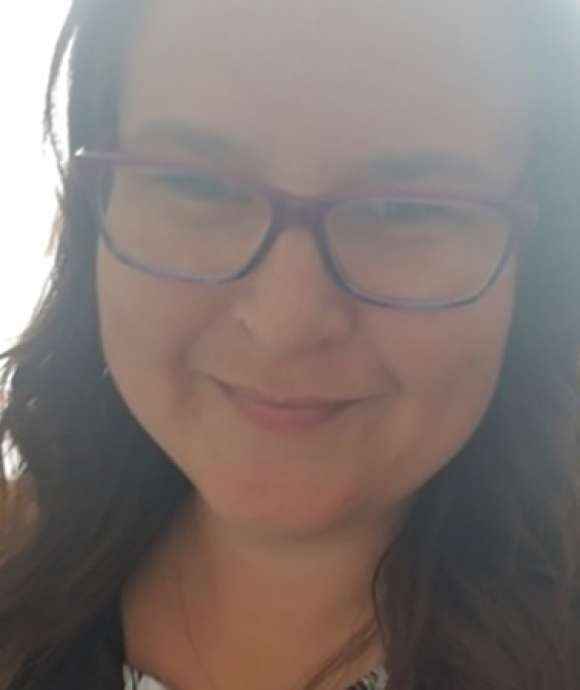
Vanda Rajcan
Vanda Rajcan, PhD, is the Assistant Director at the Holocaust Educational Foundation of Northwestern University, where she researches the wartime Slovak state (1939-1945) and postwar trials.
Cite this article:
MLA Citation:
APA Citation:
Chicago Style Citation:
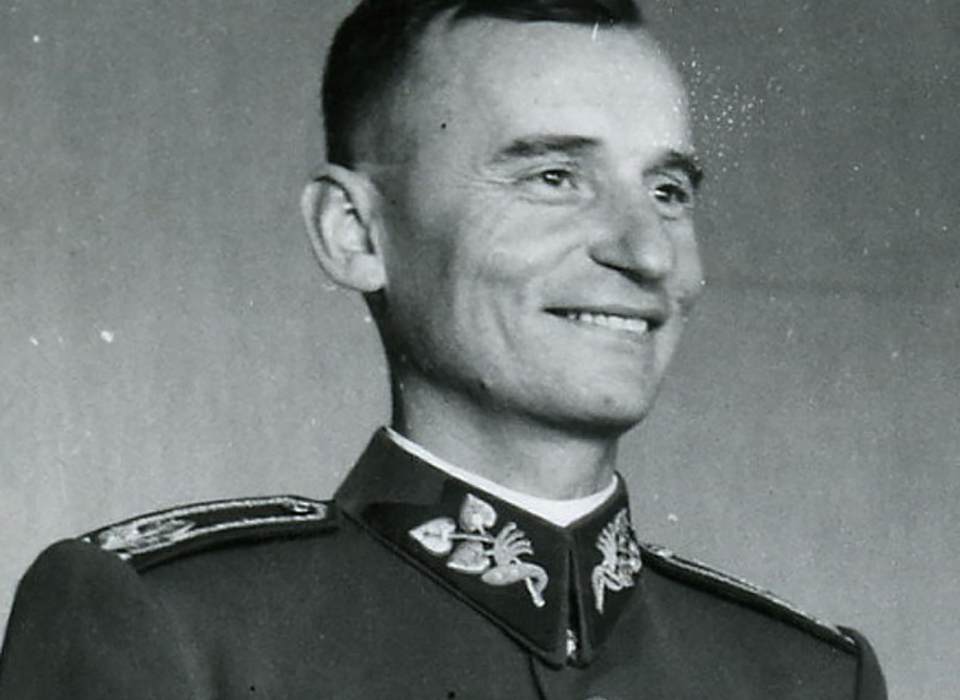
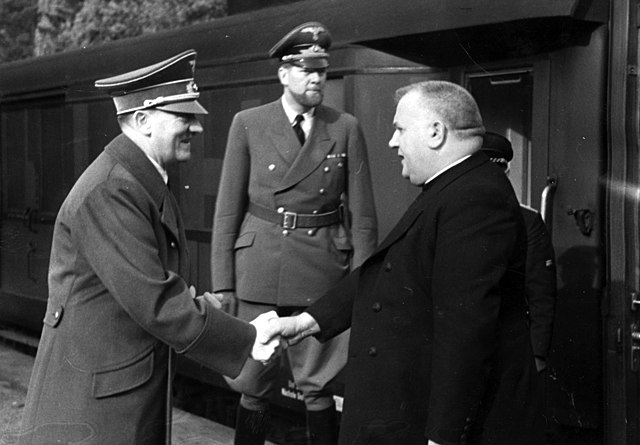
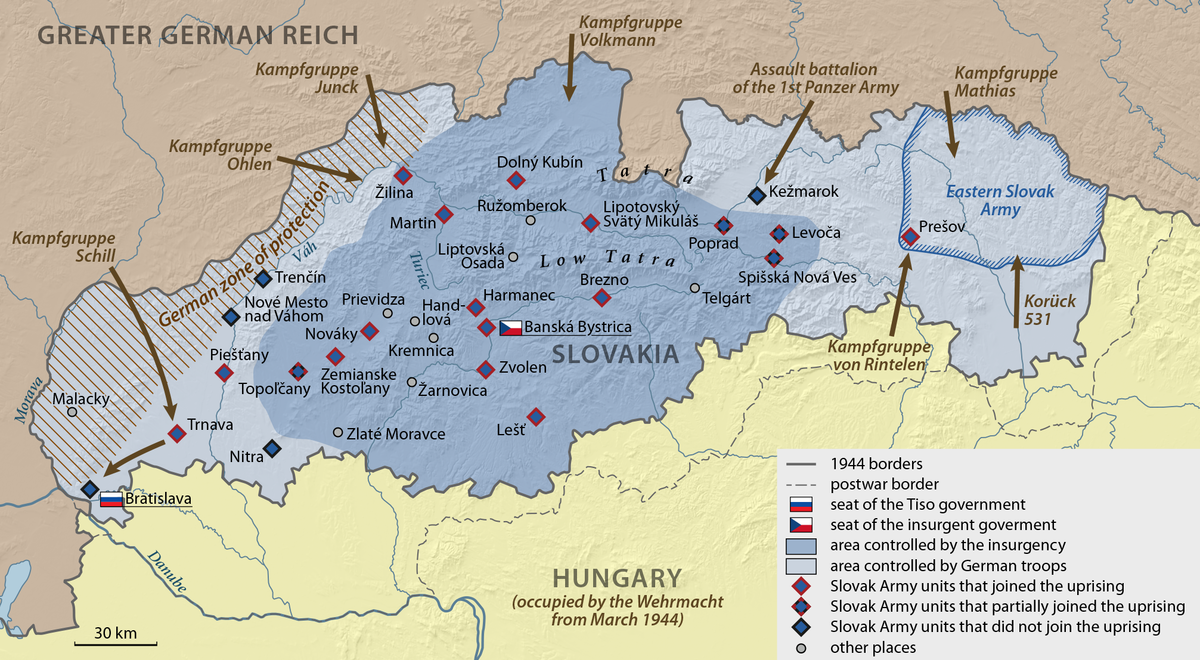
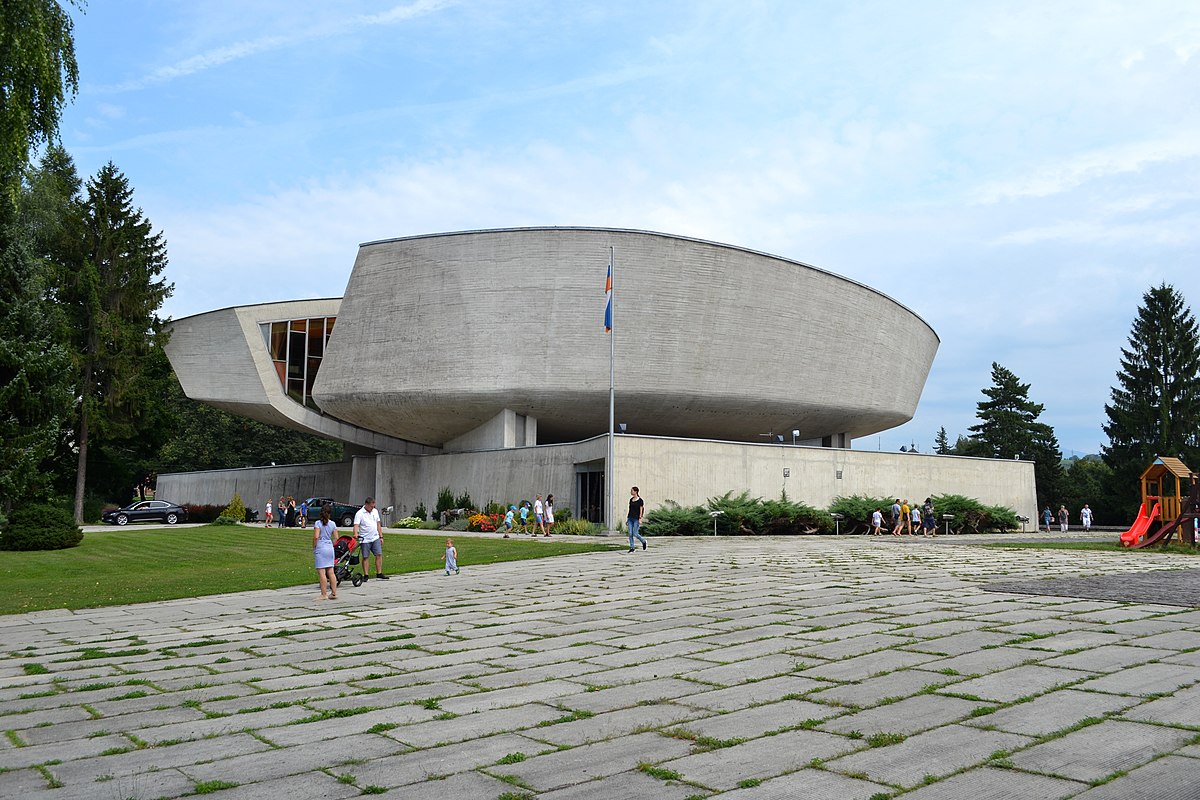



![Max Fuchs, New York City cantor, sings as Rabbi Sydney [sic] Lefkowitz, Richmond, VA, conducts the first Jewish services from Germany.](/sites/default/files/styles/max_650x650/public/2025-10/image1.jpg)



